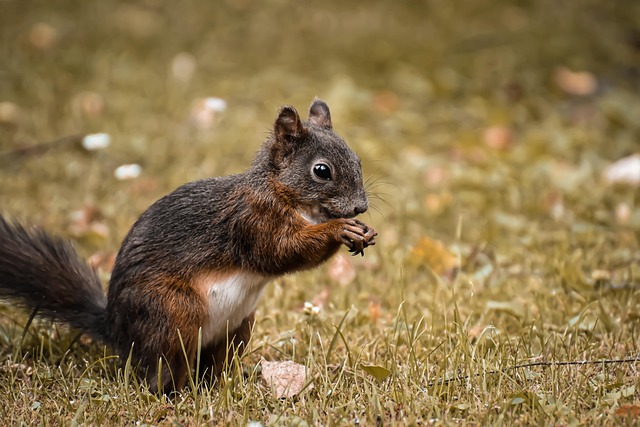Understanding squirrel behavior is key to effective, eco-friendly commercial squirrel removal strategies. Agile squirrels have specific habits and mating seasons that influence their interactions with humans and structures. Humane techniques like live trapping and natural deterrents ensure both squirrel safety and environmental preservation. In urban areas, these methods provide a sustainable alternative to traditional removal, maintaining ecosystem balance while avoiding damage. Professional commercial squirrel removal services specialize in safe capture and relocation, offering long-term solutions for peaceful coexistence between humans and squirrels in their natural habitats.
Squirrels can be a delightful part of our urban ecosystems, but their activity often requires management, especially in commercial settings. This article explores eco-friendly strategies for dealing with squirrel populations, focusing on understanding their behavior as the foundation for effective management. We’ll delve into non-lethal commercial squirrel removal techniques, discuss environmentally conscious deterrents and repellents, and provide solutions for relocating squirrels while maintaining a balanced environment.
Understanding Squirrel Behavior: Key to Effective Management
Understanding squirrel behavior is a critical component in implementing effective eco-friendly strategies for managing their activity, especially in urban and commercial settings where squirrel removal services are often required. These creatures have specific habits and preferences that influence their interactions with humans and structures. By recognizing these behaviors, property owners and managers can design tailored solutions to address issues like unwanted invasions into buildings or damage to insulation caused by nesting.
For instance, squirrels are known for their agility and dexterity, allowing them to navigate complex environments. They primarily gather food in the morning and late afternoon, making certain times of day more susceptible to encounters. Additionally, understanding mating seasons and nest-building behaviors can help predict squirrel activity patterns. Commercial squirrel removal experts leverage this knowledge to employ humane traps and deterrents, ensuring that both the squirrels and the environment are respected while effectively managing their presence.
Non-Lethal Commercial Squirrel Removal Techniques
In the realm of commercial squirrel removal, non-lethal techniques have gained significant traction due to their humane and environmentally conscious approach. These methods are particularly valuable in urban settings where wildlife interaction is common and closely monitored. One such technique involves live trapping, which employs cages designed to capture squirrels humanely without causing them harm. Trained professionals set these traps strategically, often utilizing baits like nuts or fruits that squirrels are attracted to. Once caught, the squirrels are carefully relocated to suitable, distant habitats, ensuring they return to a natural environment.
Another popular non-lethal method is repelling and deterring squirrels through specific scents and visual barriers. Commercial operations may use scent repellents that squirrels find unpleasant, temporarily discouraging them from certain areas. Additionally, physical deterrents like netting or specific types of landscaping can be employed to create physical obstacles, guiding squirrels away from desired locations while allowing them to remain unharmed in their natural habitats. These strategies not only manage squirrel activity effectively but also contribute to the preservation of urban ecosystems and the well-being of these animals.
Eco-Friendly Deterrents and Repellents
When it comes to managing squirrel activity, especially in urban areas where commercial squirrel removal services are often required, eco-friendly deterrents and repelents offer a sustainable solution. These methods prioritize safety for both the squirrels and the environment while effectively keeping these furry visitors at bay. Natural ingredients like cinnamon, pepper, and garlic can be used to create homemade repellents, which can be applied around entry points and habitats. Commercially available eco-friendly deterrents often incorporate plant-based oils and scents that squirrels find unpleasant, providing a non-toxic alternative to strong chemicals.
By opting for these green methods, property owners can humanely discourage squirrel intrusion without causing harm or leaving harmful residues. This approach not only benefits the squirrels but also contributes to maintaining a healthier ecosystem. Moreover, using eco-friendly strategies can be cost-effective and often more acceptable for areas with strict environmental regulations, making them ideal solutions for those seeking sustainable methods of squirrel management alongside professional commercial squirrel removal services.
Restoring Balance: Relocating Squirrels and Preventive Measures
Restoring Balance: Relocating Squirrels and Preventive Measures
When dealing with persistent squirrel activity, especially in urban areas, a humanely focused approach is crucial. Commercial squirrel removal services often employ relocation methods as a sustainable solution. This involves capturing squirrels safely and transporting them to suitable habitats away from the initial location. By doing so, these professionals help to restore balance to the local ecosystem while mitigating potential damage caused by squirrels in residential or commercial settings.
Preventive measures are also key to long-term management. This includes ensuring proper food storage, sealing entry points, and maintaining a clean environment to deter squirrels from seeking shelter and food sources. By combining relocation services with preventive practices, it’s possible to coexist harmoniously with these furry creatures while minimizing disruptions to both human activities and their natural habitats.
In managing squirrel activity, understanding their behavior is key. This article has explored a range of eco-friendly strategies from non-lethal commercial squirrel removal techniques to deterrents and even relocation as a last resort. By implementing these measures, we can coexist with squirrels while maintaining a balanced ecosystem. Remember that, in the context of commercial squirrel removal, humane and environmentally conscious practices are not only beneficial for wildlife but also ensure long-term solutions for both businesses and nature enthusiasts alike.
